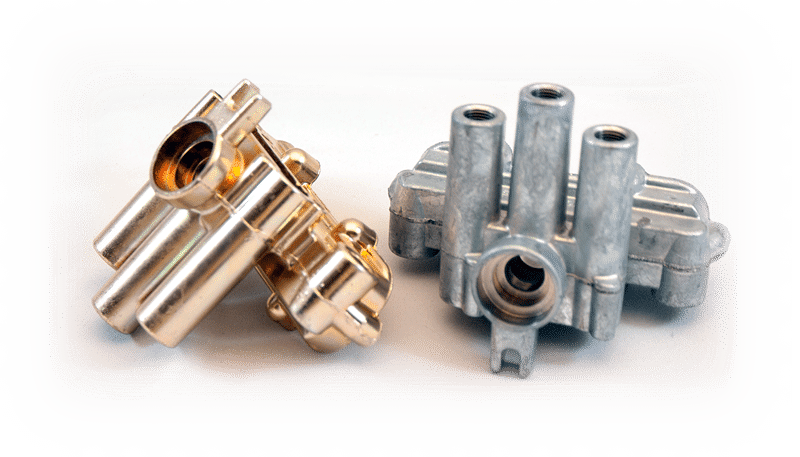Hot dip galvanizing (HDG) is a widely used method of protecting steel from corrosion by coating it with a layer of zinc. The thickness of the galvanized coating is important for the durability and performance of the steel in different environments. In this blog post, we will discuss what is hot dip galvanizing, why it is important, how it is done, how to determine the required coating thickness, and what are the standards and methods for measuring it.

What is Hot Dip Galvanizing?
Hot dip galvanizing is a process of coating fabricated steel by immersing it in a bath of molten zinc at a temperature of around 450 °C (842 °F). The zinc reacts with the iron in the steel to form a series of zinc-iron alloy layers and an outer layer of pure zinc. The resulting coating is metallurgically bonded to the steel and provides a barrier and cathodic protection against corrosion.
Importance of Galvanized Coatings
Galvanized coatings have many advantages over other corrosion protection systems, such as:
- They are cost-effective and have a long service life.
- They are abrasion-resistant and self-healing.
- They cover all surfaces, edges, and corners of the steel, including the interior of hollow structures.
- They can withstand harsh environmental conditions, such as high temperatures, humidity, salt spray, and chemical exposure.
- They are aesthetically pleasing and can be painted, or powder coated for additional protection or appearance.
Significance of Thickness
The thickness of the galvanized coating is one of the key factors that determine its corrosion resistance and durability. The thicker the coating, the longer it will last in a given environment. However, the thickness of the coating also depends on several factors, such as the chemical composition, surface condition, and geometry of the steel, as well as the temperature and composition of the zinc bath. Therefore, it is important to know how to specify, measure, and control the coating thickness to ensure optimal performance.
Fundamentals of Hot Dip Galvanizing
Process Overview
The process of hot dip galvanizing consists of three main steps: surface preparation, galvanizing, and inspection.
- Pre-treatment
The surface preparation involves cleaning the steel from dirt, oil, grease, paint, mill scale, and rust using caustic, acid, and flux solutions. This step is essential for ensuring a good adhesion and quality of the coating.
- Galvanizing Bath
The galvanizing bath consists of molten zinc with small amounts of other metals, such as aluminium, lead, nickel, or tin. The bath temperature is maintained at around 450 °C (842 °F). The steel is immersed in the bath for a specified time depending on its size and thickness. During this time, the zinc reacts with the iron in the steel to form four distinct layers: three zinc-iron alloy layers (gamma, delta, and zeta) and an outer pure zinc layer (eta). The alloy layers are harder than the base steel and provide mechanical strength to the coating. The pure zinc layer is ductile and provides corrosion protection to the steel.
- Post-treatment
The post-treatment involves cooling, quenching, or passivating the galvanized steel to prevent oxidation or staining of the coating. The cooling can be done by air or water. The quenching can be done by water or chromate solutions to enhance the appearance and adhesion of paint or powder coatings. The passivation can be done by chromate or phosphate solutions to reduce the reactivity of the zinc and increase its resistance to white rust.
Corrosion Protection Mechanism
The galvanized coating protects the steel from corrosion by two mechanisms: barrier and cathodic.
Barrier
The barrier mechanism involves the formation of a physical and chemical barrier between the steel and the environment. The zinc coating prevents the moisture, oxygen, and pollutants from reaching the steel surface and causing rust. The zinc also reacts with the atmospheric carbon dioxide to form a thin layer of zinc carbonate, which is insoluble and stable. This layer further seals the coating and slows down the corrosion rate.
Cathodic
The cathodic mechanism involves the sacrificial action of the zinc in case of coating damage. Zinc is more electropositive than iron, which means it will corrode preferentially when in contact with an electrolyte, such as water or soil. This creates an electric current that flows from the zinc to the steel, protecting the exposed steel from corrosion. The cathodic protection can extend up to a few millimetres from the damage site, depending on the conductivity of the electrolyte.
Factors Influencing Coating Thickness
The thickness of the galvanized coating is influenced by several factors, such as:
- Steel chemistry: The composition of the steel affects the reaction rate and the formation of the alloy layers. For example, silicon and phosphorus can increase the coating thickness, while carbon and manganese can decrease it.
- Steel surface: The condition of the steel surface affects the adhesion and quality of the coating. For example, rough or uneven surfaces can result in thicker or thinner coatings, while smooth or polished surfaces can result in uniform coatings.
- Steel geometry: The shape and size of the steel affect the immersion time and the drainage of excess zinc. For example, thick or large pieces require longer immersion times, while thin or small pieces require shorter immersion times. Similarly, complex, or irregular shapes can result in uneven coatings, while simple or regular shapes can result in uniform coatings.
- Zinc bath: The temperature and composition of the zinc bath affect the reaction rate and the formation of the pure zinc layer. For example, higher temperatures increase the reaction rate and decrease the coating thickness, while lower temperatures decrease the reaction rate and increase the coating thickness. Similarly, higher aluminium content increases the formation of pure zinc layer, while lower aluminium content decreases it.

Determining the Required Galvanizing Coating Thickness
The required galvanizing coating thickness depends on the intended use and service life of the steel. Different applications and environments have different corrosion rates and thus different coating thickness requirements. For example, a steel structure exposed to a marine atmosphere will require a thicker coating than a steel structure exposed to a rural atmosphere.
There are several methods to determine the required galvanizing coating thickness, such as:
- Using corrosion rate tables- These tables provide average corrosion rates for different environments based on historical data and empirical studies. They can be used to estimate how long a given coating thickness will last in a given environment. However, they do not account for variations in local conditions or design factors that may affect corrosion rates.
- Using life-cycle cost analysis- This method involves calculating the present value of all costs associated with corrosion protection over a specified period of time. It compares different corrosion protection options based on their initial cost, maintenance cost, replacement cost, and residual value. It can be used to select the most economical option that meets performance criteria.
- Using performance-based specifications– These specifications define performance criteria for corrosion protection based on measurable outcomes, such as service life, appearance, or environmental impact. They allow flexibility in choosing corrosion protection methods that meet or exceed these criteria.
Standard Specification for Hot Dip Galvanizing AS/NZS
The standard specification for hot dip galvanizing in Australia and New Zealand is AS/NZS 4680:2006 . This standard specifies requirements for materials, design, fabrication, inspection, testing, and certification of hot dip galvanized coatings on steel articles. It also provides guidelines for good practice in galvanizing.
The standard specifies minimum average coating mass (g/m2) and minimum local coating mass (g/m2) for different categories of steel articles based on their thickness (mm). The minimum average coating mass is calculated by multiplying 0.14 by average coating thickness (μm). The minimum local coating mass is calculated by multiplying 0.12 by local coating thickness (μm).
The standard also specifies minimum average coating thickness (μm) and minimum local coating thickness (μm) for centrifuged articles based on their mass per unit area (g/m2). The minimum average coating thickness is calculated by dividing 7 by mass per unit area (g/m2). The minimum local coating thickness is calculated by dividing 6 by mass per unit area (g/m2).
The standard also provides methods for measuring coating mass or thickness using magnetic gauges or weigh-galvanize-weigh methods.
Methods for Measuring Galvanizing Weight or Thickness
There are several methods for measuring the weight or thickness of the galvanizing coating on steel articles. The most common methods are:
Magnetic thickness gauge
This is a portable device that uses a magnetic field to measure the coating thickness on ferromagnetic substrates. It is suitable for non-destructive testing of flat or curved surfaces. The accuracy of this method depends on the calibration of the device, the surface condition of the substrate and the coating, and the operator skill.
Weigh-galvanize-weigh method
This is a destructive method that involves weighing the article before and after galvanizing and calculating the coating mass from the difference. This method is suitable for small or irregularly shaped articles that cannot be measured by other methods. The accuracy of this method depends on the accuracy of the weighing scales, the removal of excess zinc (e.g., by filing or grinding), and the correction for any changes in density or volume of the substrate.
Stripping method
This is a destructive method that involves stripping off the coating from a known area of the article and weighing the stripped coating. This method is suitable for measuring the average coating mass over a large area. The accuracy of this method depends on the accuracy of the weighing scales, the removal of all coating material (e.g., by acid dissolution or mechanical abrasion), and the correction for any changes in density or volume of the substrate.
Microscopic method This is a destructive method that involves cutting a cross-section of the article, polishing it, and measuring the coating thickness under a microscope. This method is suitable for measuring the local coating thickness at specific points or along edges. The accuracy of this method depends on the quality of the cutting, polishing and microscopic equipment, and the operator skill.

Conclusion
Hot dip galvanizing is an effective way to protect steel from corrosion by providing a durable zinc coating. The standard specification for hot dip galvanizing in Australia and New Zealand is AS/NZS 4680, which covers both centrifuged and non-centrifuged articles. The standard specifies the minimum coating mass and thickness for different steel thicknesses and corrosivity categories, as well as the appearance and quality of the coating. There are various methods for measuring the weight or thickness of the galvanizing coating on steel articles, such as magnetic thickness gauge, weigh-galvanize-weigh method, stripping method and microscopic method. Each method has its advantages and disadvantages depending on the type and size of the article, and the level of accuracy required.





